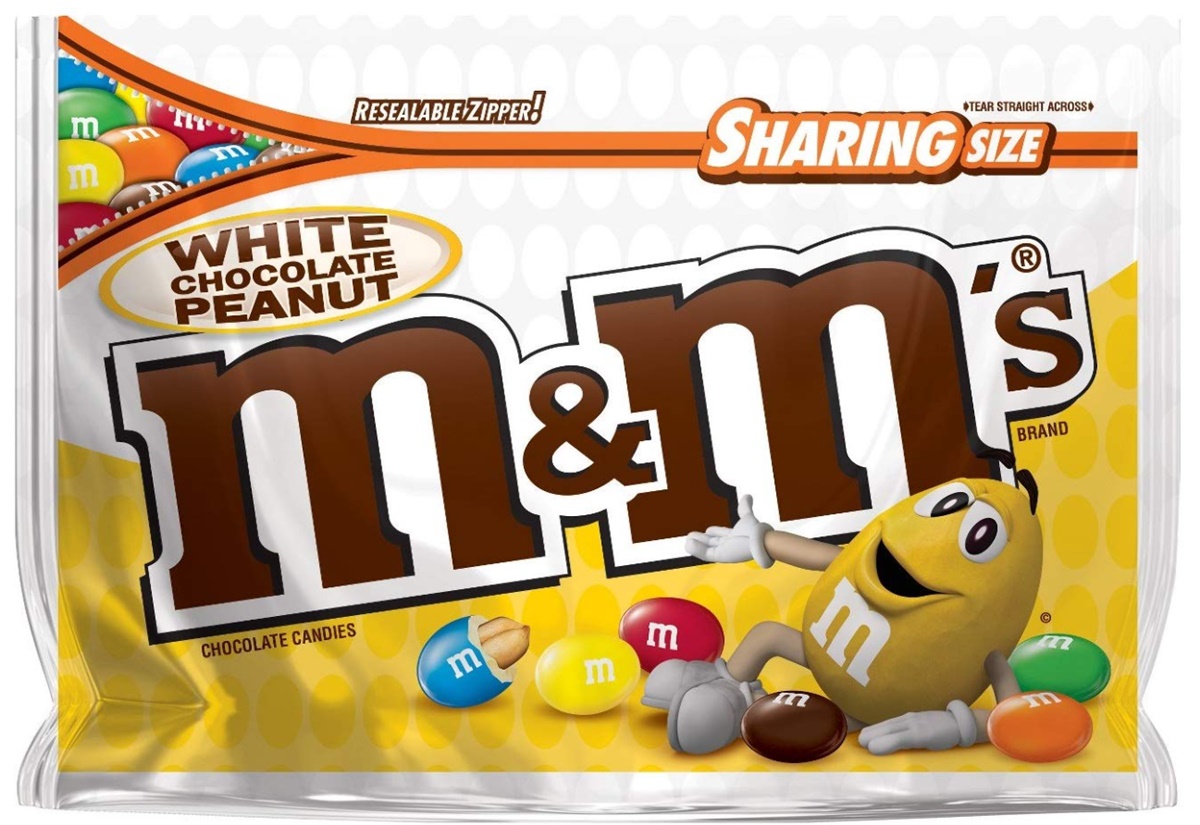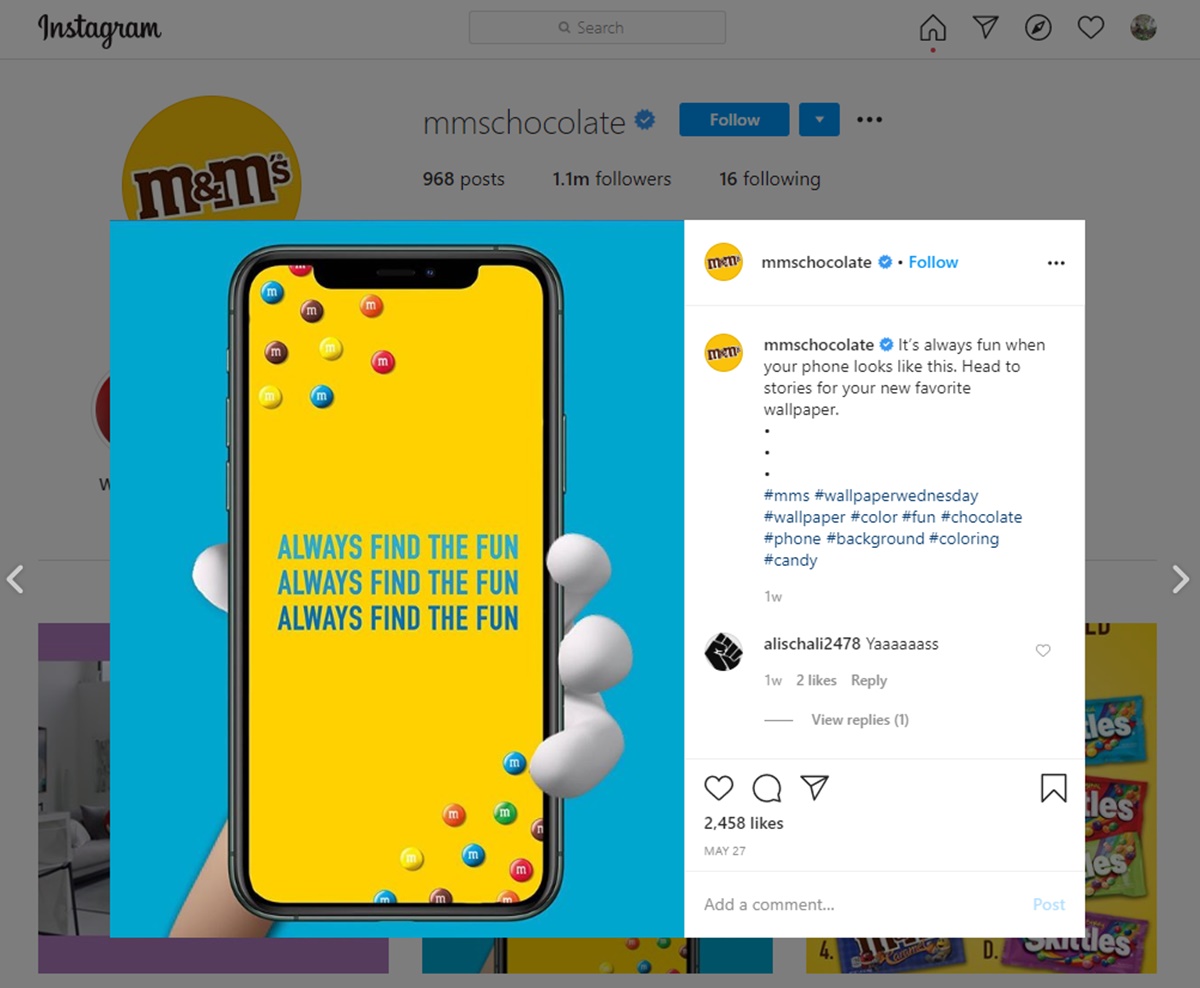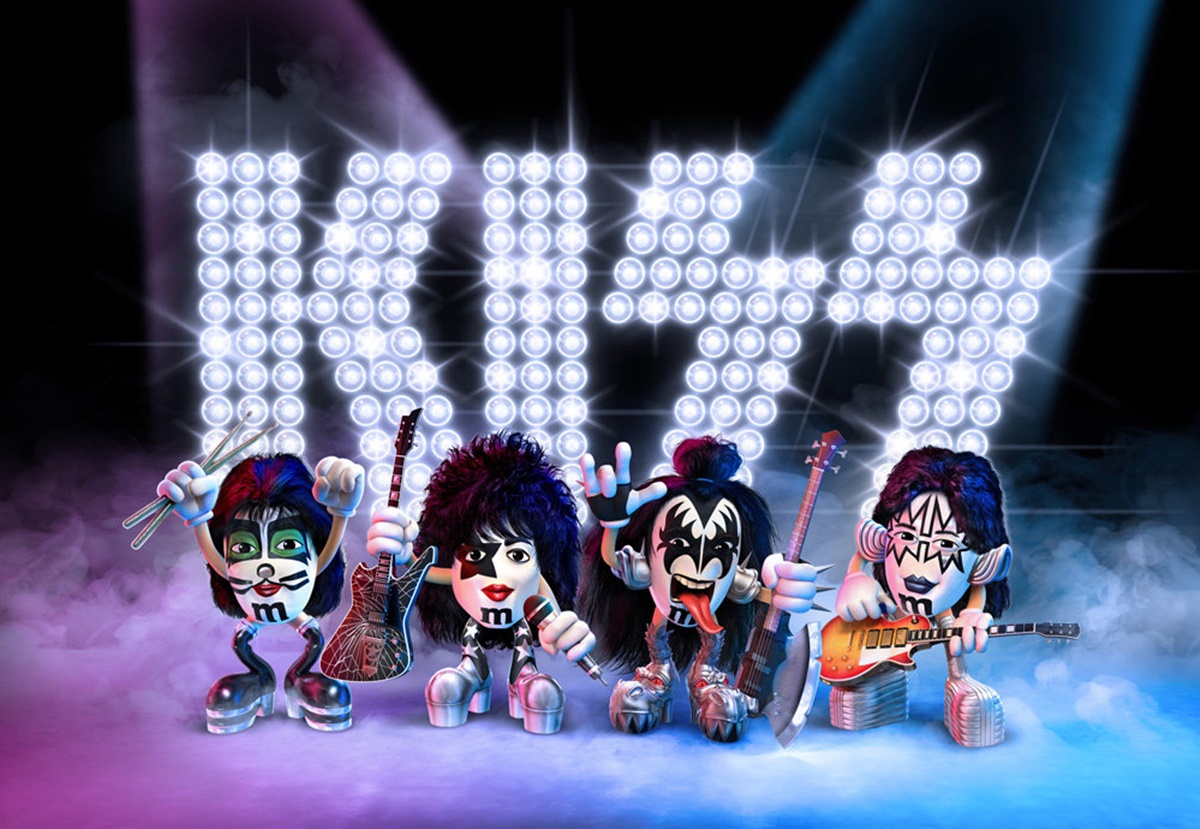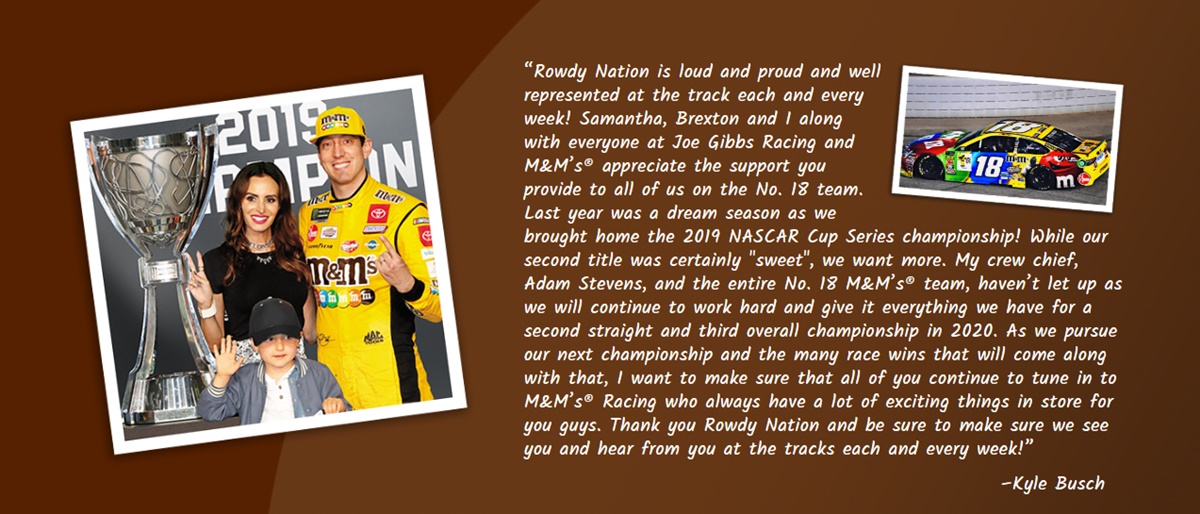M&M's Branding Strategy: A Tasty Treat for Nearly 80 Years
Do you know that the multi-colored chocolate candies of M&M’s have been around since the 1940s? The brand has seen many changes over the course of time, but somehow it still remains a tasty treat in customers’ minds. That is a long time for a brand to stay relevant among consumers, especially when so many new candy products are introduced each year.
How does M&M’s do it? One thing for sure, M&M’s is still here, not just because of its tasty rainbow candies. It has become a part of a lifestyle - which is why people keep talking about it and generating free advertisement for the candy brand. The marketing activities help a large part in getting people excited for M&M’s too.
These are all parts of M&M’s branding strategy to promote the colorful candies and get people checking out the tasty chocolates. The more buzz the brand can make, the more consumers will talk about its candies and associate M&M’s with a great snack for everyone. In this article, we are going to learn more about M&M’s branding strategy and see how it makes people keep craving for the chocolate candies. Let’s open the bag to see the secret magic!
M&M’s introduction

M&M’s is a sweet product that originated in the US in 1941. The signature products are multi-colored button-shaped chocolate candies, each of which has a white letter ‘m’ printed in lowercase on one side. The original candies had a semi-sweet chocolate filling and are still a regular taste nowadays. Numerous variations have been introduced, such as almond, peanut butter, pretzel, dark chocolate, crispy, and caramel, with some others only available in certain durations of geographic locations.
M&M’s is a flagship product of Mars Incorporated - which is one of the largest privately held companies in manufacturing food products, confectionery, pet food, and even animal care services. Since 2003, M&M’s candies have been sold in over 100 countries. Its initials are the names of the two creators - Bruce Murrie and Forrest Mars. The ideas for the candies came from a method used by the soldiers to carry chocolates without melting in warm climates. In 1949, the brand introduced a tagline “Melt in your mouth, not in your hand”, which reflected the feature directly.
The company’s first big customer was the military, and then it gradually provides for broader customers. In the 80s, M&M’s Chocolate candies became the first candy in space when it was chosen to be included in the astronauts’ food supply. Through time, the company kept introducing new flavors and colors to be more appealing to customers. The colors were accompanied by funny characters and commercials, which we will discuss in the later section.
Influenced by the parent company Mars, M&M’s has succeeded not just because of the tasty products, but also because of the unique combination of innovation and determination. It has been consistent in presenting new campaigns over its active time. They are planned out carefully and effectively motivate consumers to buy the products.
Next, we are going to look at the basic branding strategy of M&M’s in products and target customers. These are the basic foundation for any company to build its working process and introduce new products more efficiently. Keep your note and pen nearby, and you may learn something new.
M&M’s products, target audience & market

M&M’s products are chocolate filled candies with colorful shells to make it look attractive, especially to children. Each of the pieces is printed with a lower case letter ‘m’ and is filled with different variants of taste. The colors for candies are brown, red, orange, blue, green, and yellow.
From the beginning, M&M’s realized that colors played an important role in the buyer’s choice. This idea of color has been a huge and successful part of M&M’s branding strategy. The change of colors could be strategic, event-related, or campaign-available only. The public is also invited to take part in deciding the brand’s candy colors, but we will get to that later.
The taste also is a part of the product strategy for M&M’s. Original candy was filled with milk chocolate, and the first variation added peanuts. Both of these flavors are all-time favorites and are still in high demand. With time, more varieties have been added as well as different candy sizes.
In plain sight, M&M’s festive colors and bite-sized candies have a special appeal to kids. But, the problem is, children are not in control of the family purchases. So the slogan “Melt in your mouth, not in your hand” was aimed at parents instead. It suggests that M&M’s prevents children from getting their hands dirty and sticky with messy mouths. M&M’s early target customers were children, but it got the children’s parents to buy.
After World War II, there was a shift in the demographics for candy eaters. Men and women started enjoying chocolate just as much as children, and there is a special craving for chocolates among women. So, M&M’s combined the previous target market with a new one of college-aged women. By advertising to women more, the company gained customers of both single women and mothers. This reflected in M&M’s “Mega M&M’s” packages (2005), which were bigger and had more mature colors like maroon, beige, gold, and teal.
If you notice, you can see how M&M’s commercials can sometimes portray experiences that professional women relate to. Advertisements can take the context of a work party or workplace. Lately, the introduction of a strong female figure called Ms. Brown is an ideal example of the women the company is targeting.
The great thing about M&M’s target customers is that the same women are likely to have children or share the candies with them. Although the brand’s figures may be relatable to adult women, they are still fun and animated characters that children can find fun and love. A stone hits two birds.
M&M’s branding strategy and campaigns
M&M’s is suitable for a mass market and can target many age groups that love sweets. But to stay as a top-of-mind brand, it needs a solid and sustainable strategy to make the products easily accessible to every consumer. This is when advertising campaigns step in to demonstrate the brand’s image thoroughly on all channels. Let’s see the strategy and campaigns that M&M’s made to promote its brand.
Deploying world events

Since the company is privately owned, it is hard to have an exact number of M&M’s spending on promotion, but the campaigns developed worldwide to strengthen the brand’s global positioning certainly say something. The company often doesn’t have several different campaigns running simultaneously, but can change promotion surprisingly quickly to reflect the world’s change. The world events are up on current events, and M&M’s likes to incorporate these into its strategies too.
The first world event was at the 1984 Olympics, where M&M’s and Mars’ Snickers became the “original snack food” of the global event. Another world event the M&M’s used to promote its brand image was when the famous painting ‘The Scream’ was stolen. It was missing for almost two years, and it was recovered just days after M&M’s new ad campaign offering two million dark chocolate candies for the return of the painting. It even used the painting in an earlier ad for the dark chocolate products.
The Oscars - one of the most prestigious events in the world is a place for M&M’s to promote the brand too, especially when women like watching the show. It created a funny and successful campaign of “Red’s Red Carpet Tips for the Oscars,” in which the ‘Red’ candy gave tips on getting a healthy tan, having an entourage, and more. They were entertaining and cartoonist.
Then, M&M’s created gift boxes with colorful candies and tailored messages of encouragement or congratulations for the Academy Awards nominees. In the 2014 awards, M&M’s had the mother and daughter duo of Melissa and Joan Rivers promoting its new campaign of “Become an M&M”. It was a website feature that let users create their alter M&M’s personalities. The campaign also had television commercials on the first episode of the season of American Idol.
Promoting with colors

As mentioned above, M&M’s considers colors as a huge part of the branding strategy. The idea of colors has contributed to many successful campaigns of the company. Early in history, the color violet was changed to the color tan. Then at one time, red was taken out due to public concern of the red dye scare. Then, it was added back due to the consumer’s request. The public is concerned about the colors in their M&M’s bags, and the brand takes advantage of that by reaching out for feedback and ideas.
In 1995, M&M’s announced that it would add a new color to the mix of candies, and customers could take part in the choosing process. When the voting ended, it turned out that blue would be the new member of the color family. In 2002, consumers could once again vote for a color change promotion between purple, pink, and aqua. M&M’s lovers worldwide chose purple, so it got into the candy bags. The color choice wasn’t permanent, and people had to buy new products soon before purple candies were no longer available.
Shortly after New Years’ in 2004, M&M’s announced a new campaign called the “Great Color Quest.” The company claimed to have drained the color from the candies and only sold black and white M&M’s for three months. Except, there were six bags with just one color of red, yellow, green, orange, blue, and brown. Those who could find these bags would win $20,000 and a Volkswagen Beetle in the same color. The winner also received a trip for four to Los Angeles and attended a re-launch event to claim their prizes.
Let fans join the production process

The color of the candies is just one of the things that M&M’s wants fans to join and help make decisions about. The cool thing is: when customers can shape the future of the products, especially their favorite ones, they become a lot more invested.
M&M’s ran a “Vote For Your Favorite Peanut” contest, in which consumers can decide future M&M’s candies’ flavors. Combined with the color vote mentioned above, M&M’s gave power to the fans to decide the way their favorite candies taste and look. The authentic dialogue with an appreciation for consumer opinion increased the brand’s outreach and sales tremendously.
M&M’s Character Vote attracted over 3.5 million votes worldwide and bumped both brand excitement and sales. The “Become an M&M” campaign was a success too, with customizable candies grew sales number by 2%. Clearly, customers love to get involved with M&M’s. The more actively and emotionally involved, the more likely consumers would spread positive words about your products.
Create a unique experience on social media

With the social media age, there are more tools and channels than ever to reach out and involve the audience. The social channels provide a window for companies to see the lives and spending patterns of billions of people. That is an amazing reach, both globally and domestically.
And consumers can earn benefits from companies reaching out too; they get more amazing content, community sense, and discounts or prizes. So, it is a no brainer that that good social media presence is a must for brands nowadays. Having been familiar with making viral marketing campaigns, M&M’s relied on social media, especially Facebook, for its M&M’s Pretzel campaign and built active Facebook pages to promote their candy mascots.
Miss Green - the green candy hosted a Facebook selfie competition called “Tour of Ireland” and an award-winning campaign on Snapchat for St. Patrick’s Day. As a result of social media marketing, M&M’s increased brand awareness greatly by 17%, making it one of the top 10 chocolate brands in Ireland through the campaigns.
Now, you can find all kinds of cool content on M&M’s social media channels. One notable example is the food receipts involving M&M’s candies, which also have a dedicated page on the company’s homepage. These will be turned into videos, blog posts, Pinterest pictures, and more to be evergreen content. There are also amazing and creative ideas for gifts with M&M’s, such as an occasional bottle, a flower candy bag, a thank you cake, and more.
Another great example of unique experience provided by M&M’s is the groundbreaking 2010 contest in Canada called “Find Red”. This is way before Pokemon Go, but M&M’s already used Google Street View to challenge the fans to find the character Red on the street. The contest was a huge success with over 8 million social media impressions and over 200,000 Twitter mentions. Red was indeed found, too.
Appearing on movies and TVs

Recognized as a part of the US culture, M&M’s ran big promotions to appear in the released versions of highly anticipated movies. In 2005, The Star Wars Episode III: Revenge of the Sith movie released, so M&M’s ran a “mPire” promotion to suit the movie’s theme. The dark chocolate variety was introduced for the first time during this, resembling the infamous Darth Vader. The promotion ran again in 2005 with the DVD release of the movie.
Television is also a platform that M&M’s uses to promote the brand image. In 2012, Ms. Brown - the new candy character and color was introduced in a Super Bowl commercial, adding to the existing personalities of the spokes candies. The sassy yet sophisticated Ms. Brown considers herself independent and too good for the male M&M’s, while walks confidently with her brown shell.

To be more appealing to the male customers, M&M’s decided to sponsor race car driver Kyle Busch of Nascar Race. Large renditions of the candies and famous candy characters covered the automobile and received much attention from the fans of the brand and the race league.
In 2009, M&M’s launched a campaign partnering with the rock band KISS during their new album’s release. The campaign saw KISS members appearing as M&M’s characters, and ads appeared in issues of People, Entertainment Weekly, Family Circle, and Rolling Stone. The ad copy said that the band’s members would have Dark Chocolate M&M’s backstage on tour.
In 2011, M&M’s produced an award-winning television commercial called “Hostages” that Nielsen listed as one of the best ads for brand recall. The commercial was hilarious and memorable as Yellow - an M&M’s character was threatened to be eaten by a criminal in a gas station surrounded by police.
What you can learn from M&M’s
As a quick recap, here are all the important lessons that you need to remember about M&M’s branding strategy to apply for your own company.
- To have a solid branding strategy, you would need to understand your target customers and their personas.
- Letting your fans join in the production and direction of the products is a great way to engage consumers with your brand.
- Your brand needs to provide unique experiences throughout all channels to stay on top of the customer’s mind.
- If your products have characteristics that customers can relate to, there is a higher chance that they would buy and promote your brand through word of mouth.
- Use social media channels to engage and create new experiences in a modern way.
Final words
M&M’s has been a huge part of the American culture during the past 80 years. The unique style and promotion of the products have made the brand a part of pop culture. Even though owned by a private company, M&M’s still aims to engage with customers as much as possible and provide quality candies to the public. That is the secret ingredient inside their sweet candies and almost 80 years of maintaining a high position in the food industry.
Personally, I think one of the most persuasive ideas that M&M’s achieved is to be a part of the consumer’s fun, like a humorous friend that audiences love to have besides. And by that, customers can’t help to pass the colorful treats to others, whether they are friends, family members, or children.
What do you think of M&M’s branding strategy? Do you want to apply it to your own brand, or you have other ideas in mind? Share your thought in the comments section below, and I always love to hear new opinions. Thanks for reading!
New Posts







